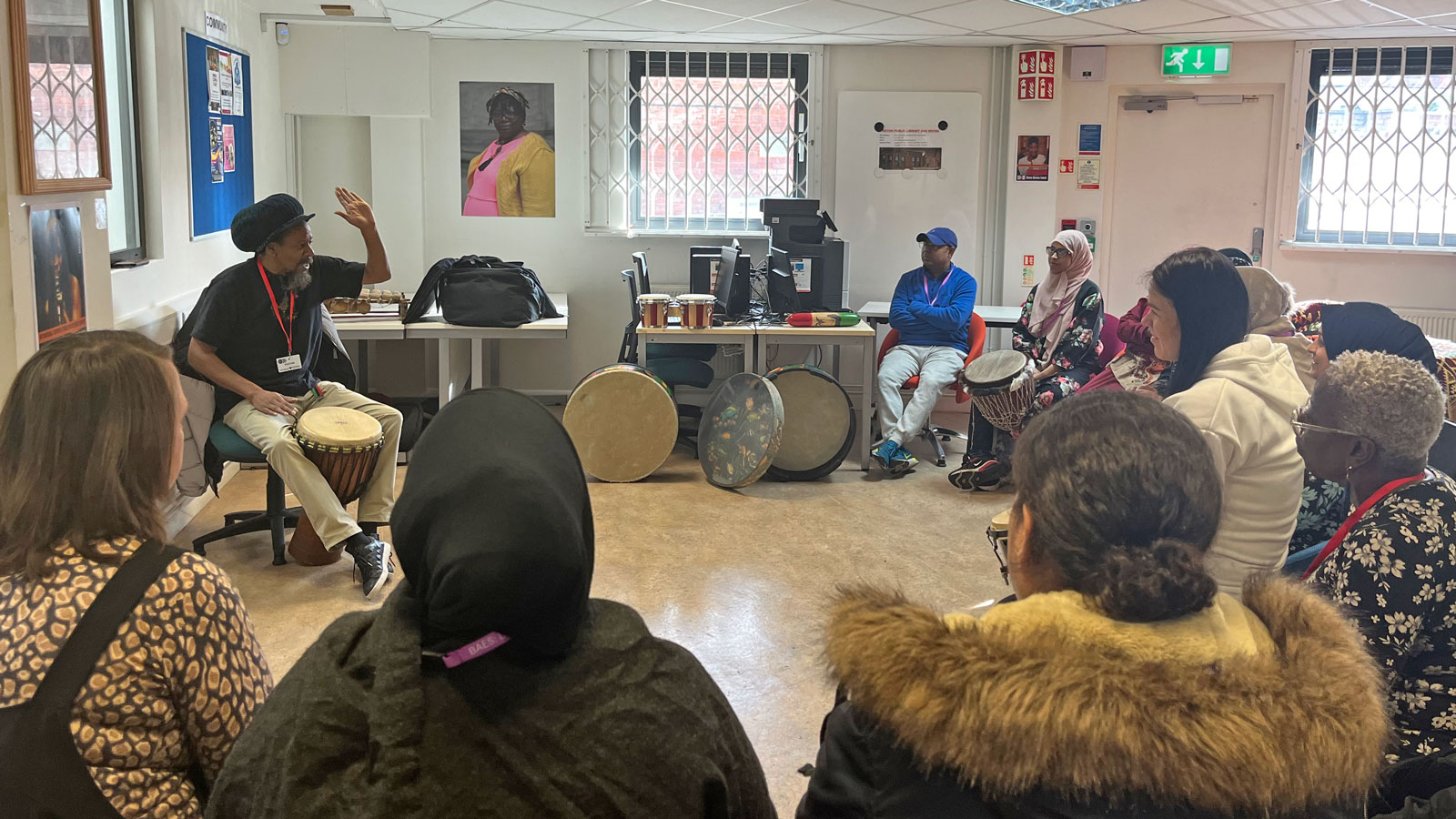As part of our Black History Month celebrations we were delighted to welcome Asha Barnes, a local musician, to run an African Drumming lesson at our Aston centre.
Asha has been working as a session musician for over ten years and has toured with some big names in music including UB40. He brought an extensive collection of these brilliant instruments with him, all of which were played by participants in the session.
In the class, Asha talked us through the different drums, including the materials they are made from and how they are tuned and maintained. The Djembe drum, from West Africa, is made of wood, typically mahogany, and cow or goat skin. The skin is stretched out over the top of the drum and held under tension by twine or rope. This rope or twine also enables the drummer to tune the instrument.
When it came time to play, Asha taught us a beat to follow and then, once we were all in time, he played a more complex pattern over the top.
Asha shared his knowledge of both the drums themselves and their cultural importance. In their native countries, the drum was an essential part of daily life. When a neighbouring tribe wanted to inform everyone of a birth, death, or union between two people, they played a specific rhythm associated with these events.
In this way when these rhythms were heard, people gathered to celebrate, bear witness, or mourn. Asha emphasised how these instruments bound people and communities together.
In fact, Asha went as far as to say that in many ways, drums were one of the first forms of communication. He also explained that many cultures developed the use of drums independently of each other.



